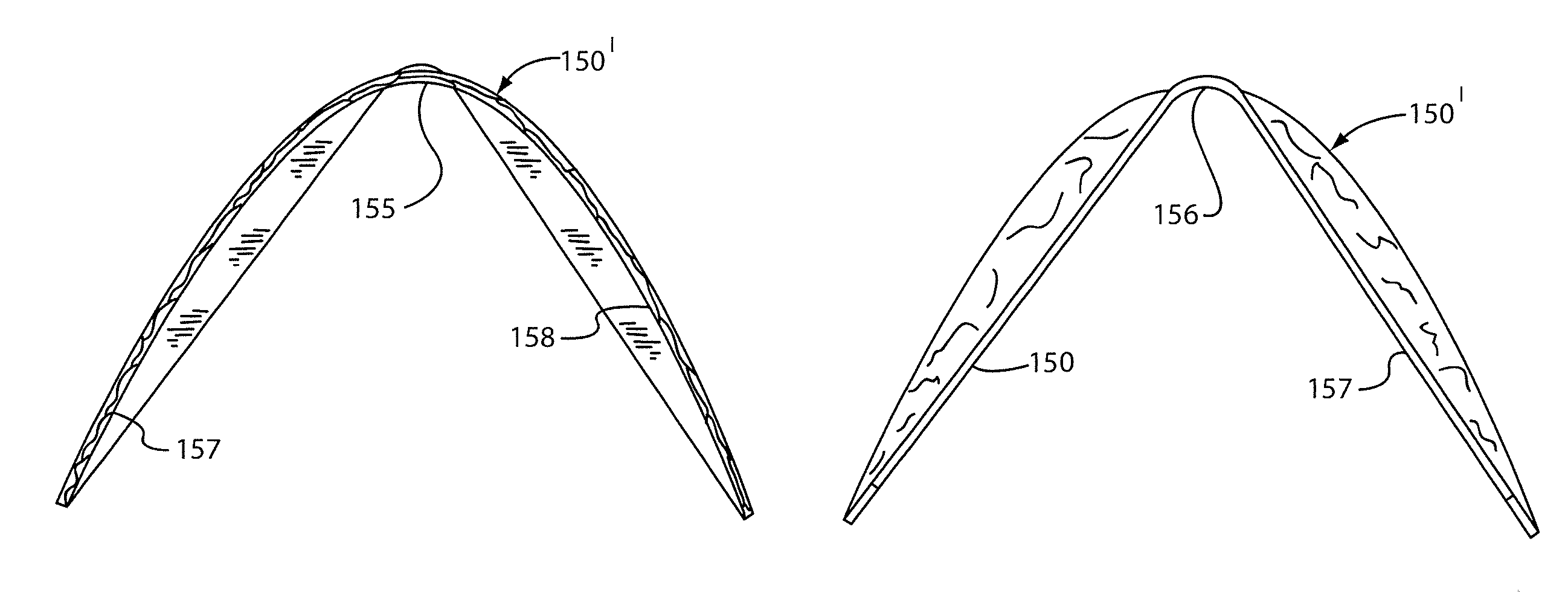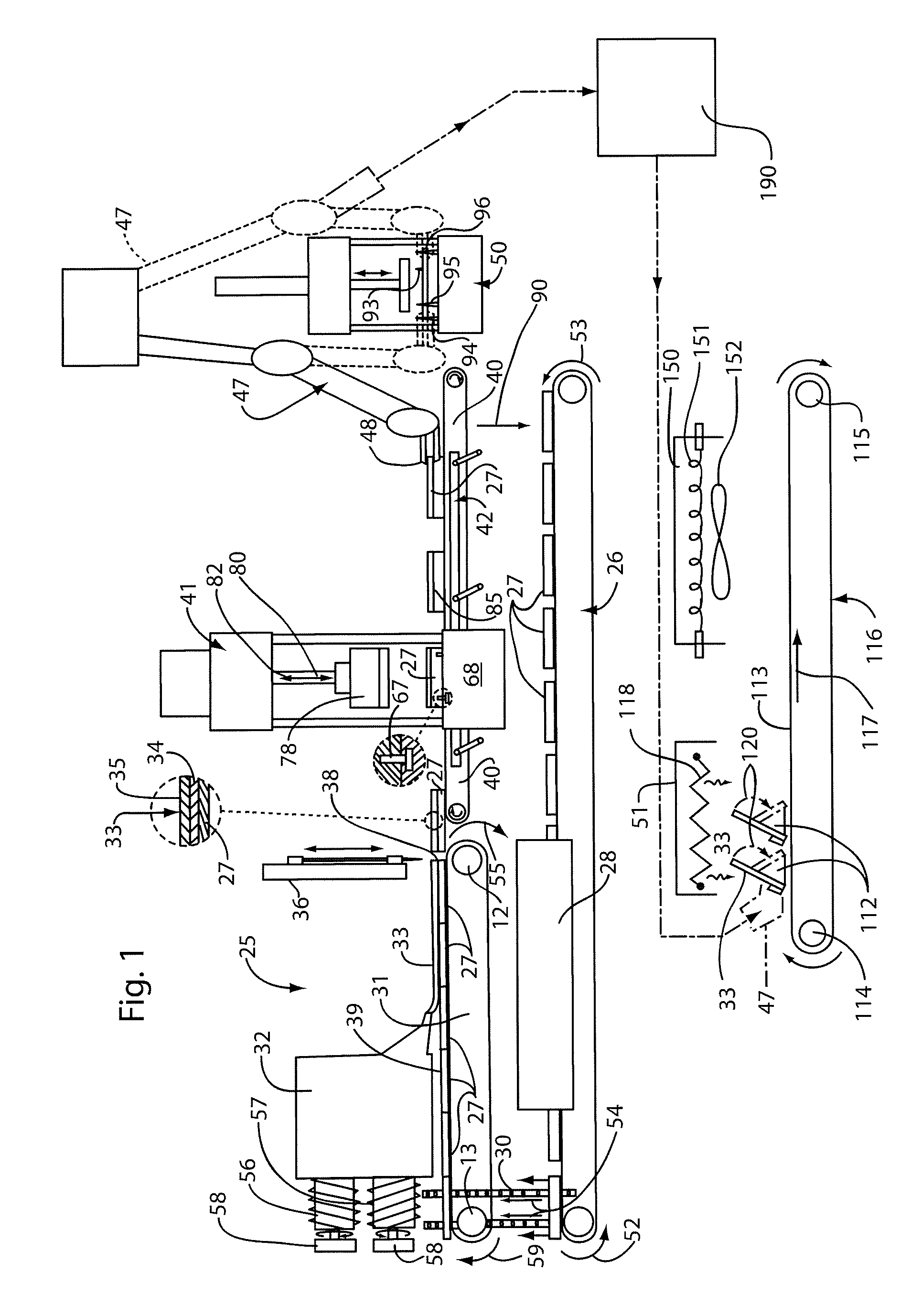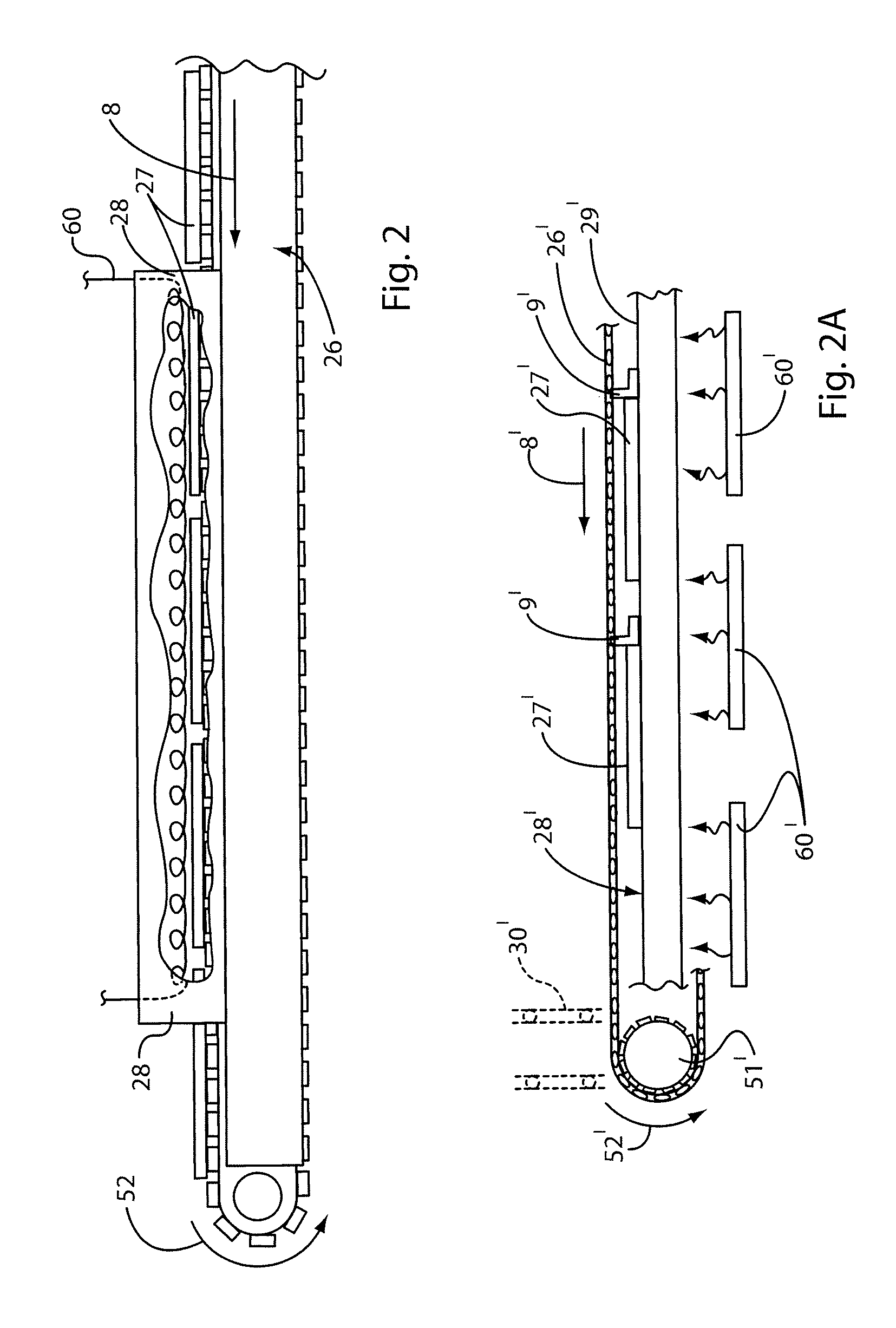Molded synthetic hip, ridge or rake shingle and process and apparatus for molding same
a synthetic hip and ridge shingle technology, applied in the field of shingle manufacture, can solve the problems of increasing the weight applied to the roof, increasing the cost of the roof, and increasing the use of natural materials, so as to shorten the molding time
- Summary
- Abstract
- Description
- Claims
- Application Information
AI Technical Summary
Benefits of technology
Problems solved by technology
Method used
Image
Examples
Embodiment Construction
[0039]Referring now to the drawings in detail, reference is first made to FIG. 1, wherein the apparatus of this invention is generally designated by the numeral 25 as comprising a preliminary conveyor apparatus 26 for delivering carrier plates 27 through a carrier plate preheater apparatus 28, as shown in perspective view in FIG. 3, whereby the carrier plates are delivered via a transfer mechanism 30 to an extruder conveyor apparatus 31 between rotatable end shafts 12, 13, whereby the carrier plates are delivered beneath an extruder apparatus 32, shown in larger view in FIG. 5, of the type preferably having a pair of single screw extruders 56, 57, by which a co-extruded sheet of shingle material 33, preferably comprised of a core material 34 covered by a layer of capstock material 35 is co-extruded onto the carrier plates 27, as is shown more clearly in perspective view in FIG. 4, and the carrier plates are delivered end-to-end therebeneath, as shown in FIG. 1.
[0040]The carrier plat...
PUM
 Login to View More
Login to View More Abstract
Description
Claims
Application Information
 Login to View More
Login to View More - R&D
- Intellectual Property
- Life Sciences
- Materials
- Tech Scout
- Unparalleled Data Quality
- Higher Quality Content
- 60% Fewer Hallucinations
Browse by: Latest US Patents, China's latest patents, Technical Efficacy Thesaurus, Application Domain, Technology Topic, Popular Technical Reports.
© 2025 PatSnap. All rights reserved.Legal|Privacy policy|Modern Slavery Act Transparency Statement|Sitemap|About US| Contact US: help@patsnap.com



